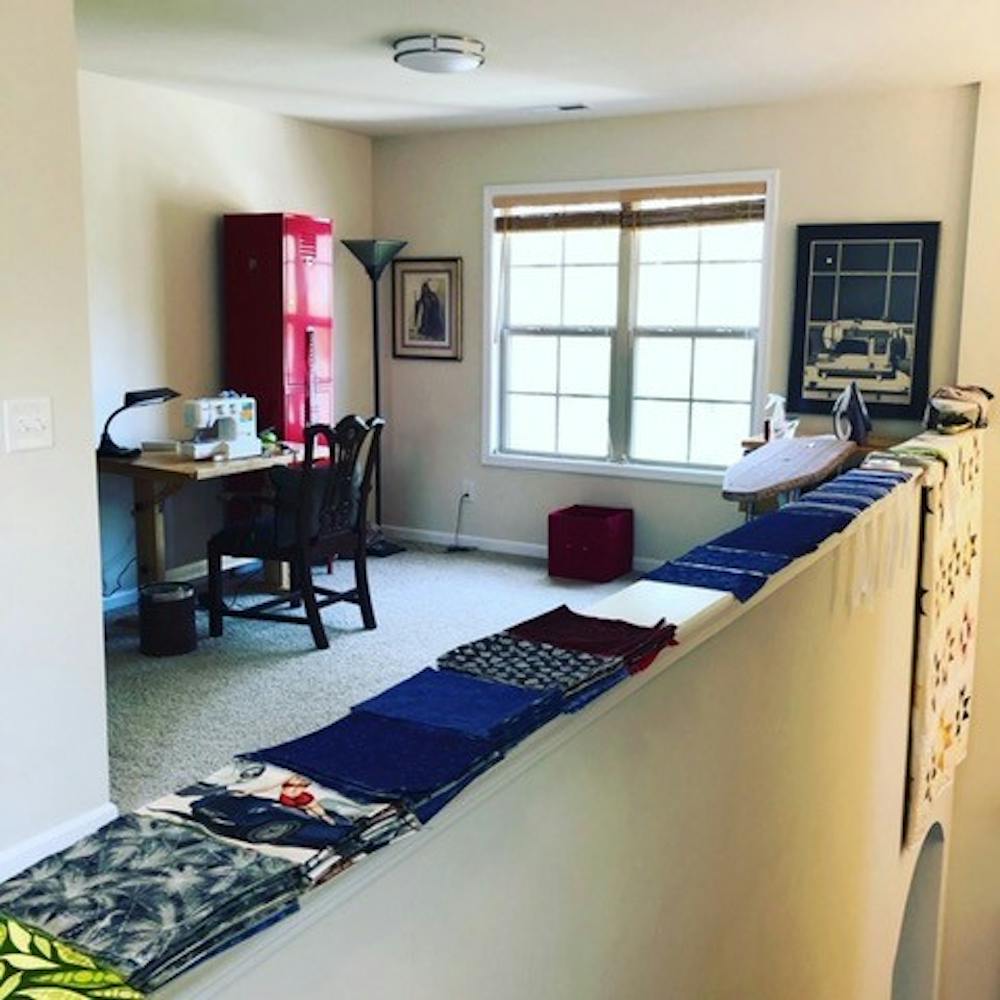Rachel Pollock is a costume crafts artisan with PlayMakers Repertory Company. She began sewing masks for registered nurses and their teams across the country in late March. Pollock has also sewn masks for friends and family’s personal use and has additionally uploaded an accessible, "jargon-free" mask-sewing tutorial to her Instagram and blog. Staff writer Kristen Jones talked with Pollock about this project.
The Daily Tar Heel: How long have you been sewing?
Rachel Pollock: I was maybe 12 or 13 years old when I learned. My mom and dad both worked when I was a kid, so for a while, before they felt I was old enough to be a latchkey kid at home by myself, I would go to the girls’ club after school. They had a sewing room in the girls’ club, and I learned to sew there.
DTH: How did you come up with the idea to begin selling these masks?
RP: I read an article that Deaconess Hospitals in Evansville, Indiana was calling on the public in their general vicinity to sew masks for the hospital. It was around March 18. I thought that was interesting and wondered whether UNC Hospitals would put out that kind of call at some point. At the time, we were mid-extended spring break, and were going to have to teach all our classes online. I teach a class this semester called Masks and Armor — ironically — and I was trying to figure out how to translate my syllabus to a digital paradigm, so I didn’t immediately start sewing. Also, we didn’t have as many cases in our area so I thought, well, let me focus on figuring out what’s going to happen with the digital delivery of Masks and Armor.
Three days later, my partner’s sister who is a registered nurse at a hospital in South Georgia, which is really hard hit right now, texted us both. She just asked if I would sew her a mask because she was terrified she was going to be sent to work in a nursing home and have no protection. So I started making masks that day, and I made 20 for her team. I just kept doing it. As soon as I sent them to Amy, I had a former student who is a registered nurse at a hospital in Denver, Colorado reach out to me on Facebook and ask if I’d sew her and her team some masks. I did, and it sort of snowballed from there.
DTH: What kind of fabric do you use for the masks?
RP: I’ve stuck with the recommendations in that initial Deaconess article. It turns out that I’ve read some studies since then that say the double layer tight-weave cotton mask is the best non-surgically produced mask. In terms of home masks, that seems to continue to be the best standard. That initial Deaconess article asked for one layer of 100% cotton flannel on the side that goes toward your face, and then a tight-weave cotton, like a quilter’s cotton or a high thread count sheet cotton.
DTH: On your blog, you included a tutorial for visual learners about how to make masks. Why do you see it as important to accommodate different learning styles for people wanting to sew masks at home?



